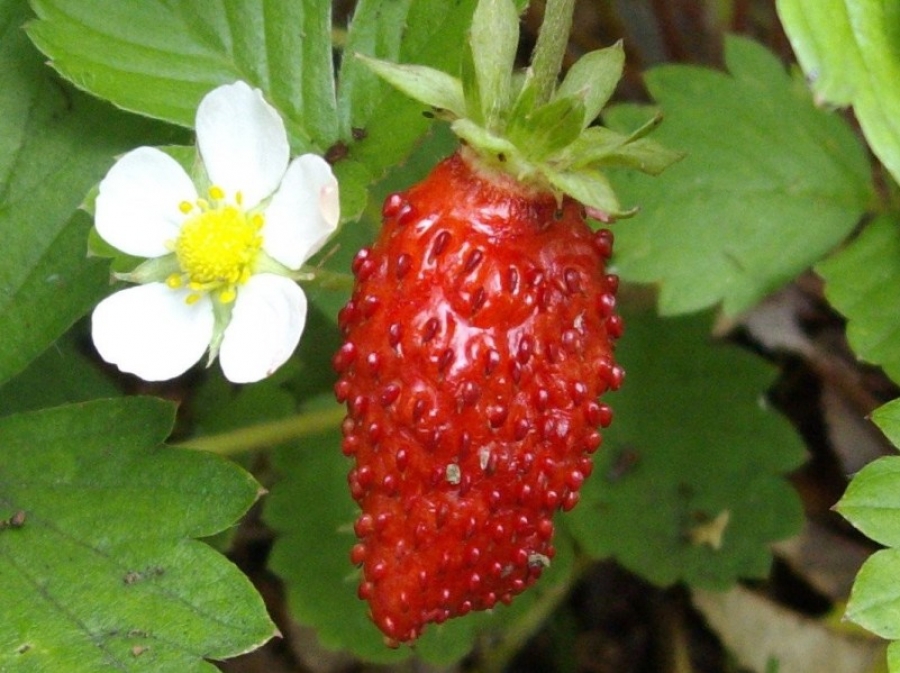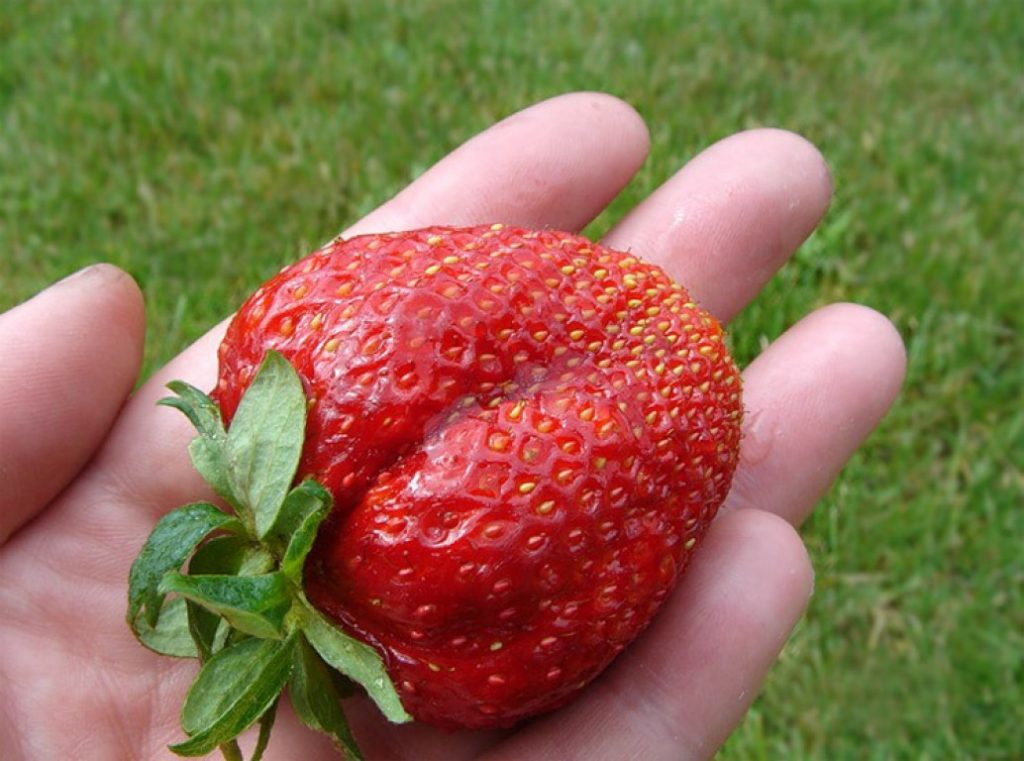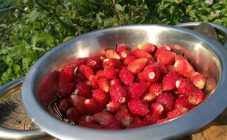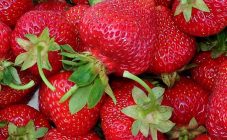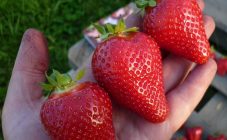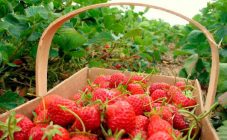Content:
There are a large number of varieties of garden strawberries and strawberries, but the most appreciated are the remontant, mustacheless varieties. Their advantage is that the bushes bear fruit during the entire growing season, and they can be grown not only in the personal plot, but also at home on the windowsill. Garden strawberry Alexandria is a popular and demanded variety that can be grown from seeds.
Strawberry Alexandria: description and characteristics of the variety
Alexandria is a remontant strawberry, was introduced back in 1964 by Park Seed. The bush can reach a height of 20 cm, the mustache is not formed. The bushes are medium leafy, the leaf plates are bright green. Small flowers with rounded white petals are formed. Fruits in miniature berries without a neck, round-conical shape. Fruit weight, as a rule, is 8-10 g. As they ripen, the berries acquire a red hue, there is a characteristic glossy surface. The pulp is characterized by a strawberry flavor, rich and pleasant aroma.
Characteristic features of the variety
This variety of garden strawberries is remontant. Throughout the growing season - from May to October inclusive - there are several waves of fruiting. The variety gives berries subject to the rules of agricultural technology and favorable climatic conditions. It is possible to collect approximately 0.5 kg of fruit from each bush.
The variety has excellent cold and disease resistance. The culture does not form a mustache, so reproduction is carried out through the seeds. The lack of sockets and compactness allows you to grow it on a windowsill or balcony.
Planting and leaving
For breeding crops, they purchase ready-made seedlings or grow them independently from seeds. Seed reproduction has its advantages: the resulting planting material is not affected by viral, fungal and infectious diseases, insects. Not always, when purchasing seedlings on the market, you can buy what you really need, since you can meet an unscrupulous seller. In addition, it is much more profitable and cheaper to purchase seeds, although it will take longer to wait for the first harvest.
Features of obtaining seeds
Gather the ripe berries and carefully cut off the top of the peel with a minimum amount of pulp with a sharp knife. For drying, lay out the future planting material in one layer on a napkin. After a few days, the dried pieces are carefully rubbed with your fingers, releasing the seeds.
There is an alternative way: a ripe large berry is placed in a glass of water, there it is kneaded. In this case, the planting material will settle to the bottom, and the pulp will float.The water with the pulp is drained, and the seeds are carefully washed and dried.
Growing seedlings and planting
Numerous reviews of gardeners say that the seeds lose their germination soon after collection, so it is recommended to plant them immediately on seedlings. Many gardeners begin to grow it in the third decade of February - the first decade of March and harvest in the same year.
To grow seedlings from seeds you will need:
- Prepare a breeding ground.
- Purchase a special plastic container, make holes on the bottom of the container to ensure drainage.
- Nutrient soil is spread evenly in the container.
- After that, the earth must be watered with a warm solution of phytosporin.
- On the surface of the soil, it is also worth spreading a thin layer of a white loose paper napkin, abundantly moistened with the same preparation.
- The planting material is poured into a separate container and carefully spread over the napkin with a toothpick.
- In places where strawberries are planted, holes can be made in a napkin, but seeds cannot be deepened into the soil.
- To reduce moisture evaporation, the container is covered with a film or a lid; the container must be stored in a bright and warm place. If everything was done correctly, then in 3-4 weeks the first shoots will appear.
- When 2-3 full-fledged leaves are formed, the seedlings need to be transplanted into separate containers or peat cups.
- In the spring, the seedlings can be gradually taken out into fresh air for hardening, then planted in open soil.
To strengthen the seedlings, it is recommended not only to harden it, but also to fertilize it. After the formation of the third leaf, it is advisable to add humus or ready-made mineral fertilizers to the soil, for example, phytosporin, gum-20M. In addition to strengthening seedlings, they disinfect the soil, preventing the development of fungal and infectious diseases.
Planting in open soil
To plant seedlings in open soil, you must first select and prepare the site. The place should be moderately lit, and the soil should be enriched with mineral and organic fertilizers. Seedlings are planted keeping the interval. Some gardeners initially cover the plants with cut plastic bottles.
For abundant fruiting, it is required to regularly mulch the soil. There are several types of mulch:
- Inorganic - plastic wrap or spandbond. A durable material, but it does not enrich the composition of the soil and can lead to decay of the root system. The main advantages of inorganic mulch are - suppression of weed growth, moisture and heat retention.
- Organic - needles, rotted sawdust, hay and peat. The listed raw materials are short-lived, but they enrich the soil composition well. During the growing season, the mulch layer will have to be renewed several times.
To land on a permanent place you will need:
- Build a bed, the width of which will be 100-110 cm. For this, the soil will need to be dug up and leveled.
- It does not matter what the mulch will be, in any case, you need to dig planting holes measuring 25 * 25 * 25 cm.It is worth observing an interval of 50 cm between the rows, and 30 cm between the bushes.
- Pour the holes abundantly, lower the seedlings and cover with soil. The apical bud should be located above the ground.
- The final stage is mulching with organic or inorganic materials. If organic matter is preferred, it is better to use dry peat or sawdust. If inorganic is used, then the edges of the material must be fixed around the perimeter.
Advantages and disadvantages of the variety
Growing garden strawberries Alexandria is in great demand among gardeners, since the plant has many advantages:
- High productivity while observing all agrotechnical rules.
- Unmatched taste.
- The versatility of using the harvested crop.
- Good adaptive properties.
- High resistance to disease.
As for the shortcomings, unfortunately, there are many of them. The main ones are:
- The culture does not tolerate drought, the optimal place for planting is partial shade.
- Demanding on soil composition and climatic conditions.
Strawberry Alexandria is a popular variety of garden strawberries, which is due to its merits. It can be grown not only in the country, but also at home on the windowsill. But before breeding strawberries, you must definitely familiarize yourself with the basic rules of planting and care in order to try the first harvest as soon as possible.
